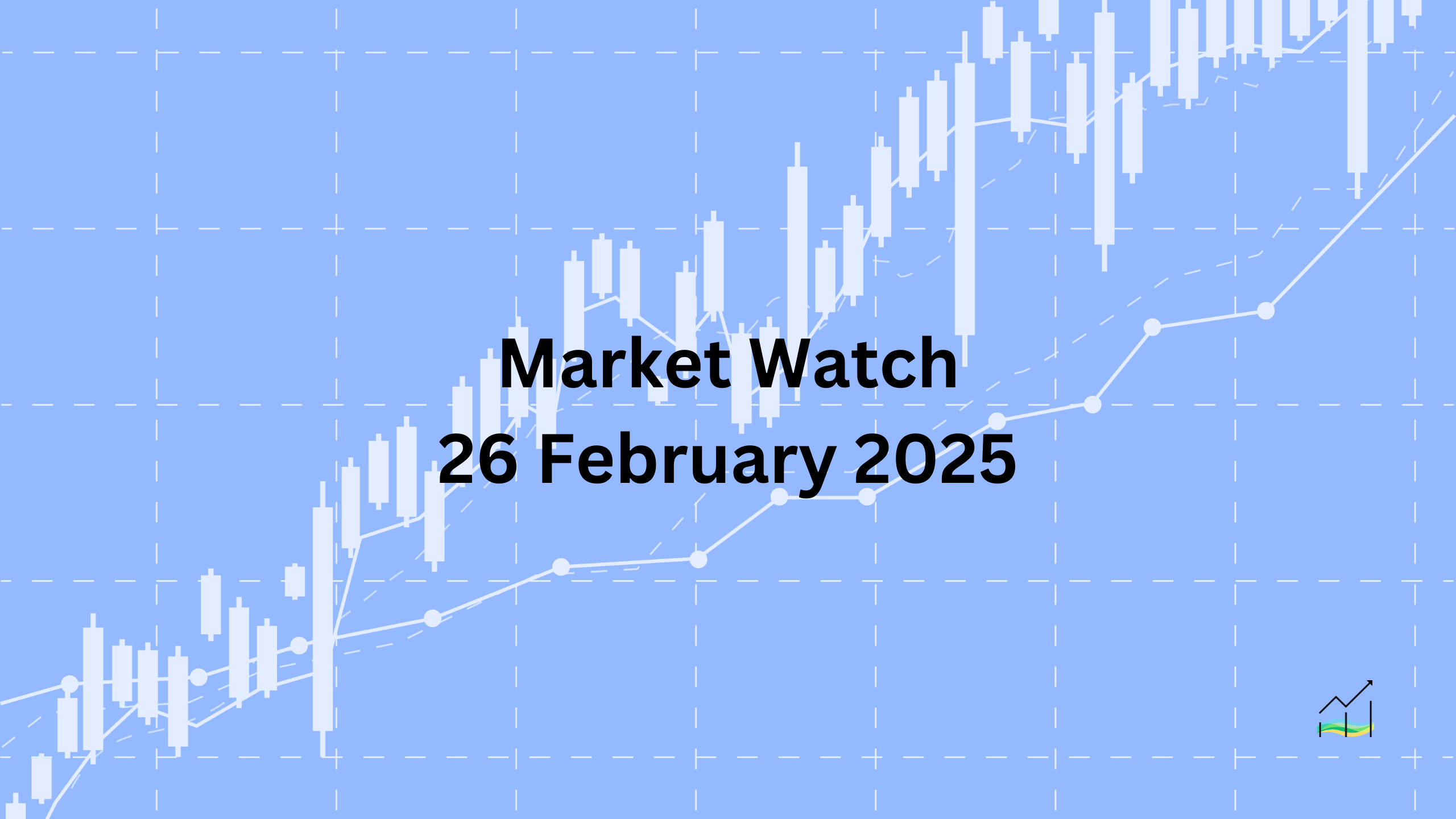26/02/2025 Market Watch

Market Volatility Amid Growth Concerns & Policy Moves
Recent economic data has sparked significant market movements, with a sharp drop in US yields, a sell-off in equities, and a weaker US dollar. Concerns about economic growth intensified following a weak Philadelphia Fed non-manufacturing survey and a steep decline in consumer confidence reported by the Conference Board. Despite this, market conditions are showing tentative stability, with the US dollar firmer but mostly within previous ranges against G10 currencies, while emerging market currencies remain mixed.
Adding to market uncertainty, new tariff considerations have emerged, with copper now included on the list of industries potentially facing US tariffs. This initially drove copper prices higher, with a 5.2% surge before retreating near recent highs.
In bond markets, the US 10-year Treasury yield declined for the fifth straight session, dipping below 4.30% for the first time this year before stabilizing near that level. European yields are slightly lower, while China’s decision to recapitalize several major banks provided support to domestic and Hong Kong equities. The Hang Seng China Enterprises Index has gained 20.6% this year.
Equities across most major regions saw gains, with Europe’s Stoxx 600 up 0.80%, potentially marking its largest increase in nearly two weeks. US stock index futures are also recovering following yesterday’s decline.
Commodities remain volatile, with gold dropping 1.25% but holding above $2900, maintaining support near its 20-day moving average. Oil prices faced a sharp decline, with April WTI falling 2.5% to close below $69, its lowest level this year, and now hovering around that mark.
United States of America
Overview
The US dollar remains under pressure as falling Treasury yields offset renewed tariff threats. The Dollar Index struggled to hold gains after testing resistance near 106.75, eventually dropping below 106.20 while holding Monday’s low near 106.10. For any meaningful recovery, the index must break above yesterday’s high.
Economic Drivers
The sharp decline in US yields has been the primary market mover. The two-year Treasury yield dropped to 4.07%, its lowest level since November 1. The ten-year yield settled below 4.30% for the first time since December 12. Notably, both yields peaked on February 12, the day the higher-than-expected January CPI report was released. Meanwhile, former President Trump renewed tariff threats against Canada and Mexico, set to take effect next week, adding further uncertainty.
Data and Events
Upcoming housing data will provide insights into the US real estate market. January’s new home sales, building starts, and permits are expected to reflect the impact of rising mortgage rates. In December, new home sales increased by 3.6%, while housing starts surged by 16.1%, marking the largest jump since March 2021. However, January data is expected to show a slowdown of nearly 10% in housing starts.
Price Action
Treasury yields and the US dollar remain in consolidation mode. The market is watching for confirmation of direction, with the Dollar Index needing a breakout to indicate any shift in sentiment.
Key Points:
- US yields continue to fall, keeping the dollar defensive.
- The two-year yield hit a low of 4.07%, while the ten-year yield settled below 4.30%.
- The Dollar Index tested resistance near 106.75 before retreating.
- Trump’s tariff threats on Canada and Mexico add market uncertainty.
- January housing data expected to show a slowdown after strong December growth.
Australia
Overview
The Australian dollar is struggling to gain momentum after stalling near key resistance. It peaked around $0.6410, just below the 38.2% retracement level of its decline from $0.6940 in late September to its early February low near $0.6090. The currency has now weakened for the fourth consecutive session and six of the last seven, with further downside risks emerging.
Economic Drivers
Australia’s inflation data provided little support for the currency. January’s CPI remained unchanged at 3.4% year-over-year, in line with expectations but below its September-October low of 2.1%. While the trimmed mean CPI edged higher, the data did not materially impact expectations for the Reserve Bank of Australia’s (RBA) policy outlook. The futures market continues to price in a 77% chance of a rate cut in May, with a full cut expected by July and another by year-end.
Data and Events
Upcoming private sector credit data for January is due before the weekend. In December, credit rose by 0.6%, slightly above last year’s average monthly increase. While this figure may offer insight into economic activity, it is unlikely to influence the RBA’s rate trajectory.
Price Action
The Australian dollar remains under pressure, with key support levels in focus. A break below $0.6320, which is being tested in European trading, could pave the way for a decline toward $0.6285 and possibly $0.6250. A recovery above $0.6415 is needed to shift momentum in favor of the bulls.
Key Points:
- The Australian dollar failed to break resistance near $0.6415 and is under pressure.
- January CPI held steady at 3.4%, with trimmed mean inflation rising slightly.
- Markets expect an RBA rate cut in May, with another by year-end.
- Private sector credit data is due before the weekend but is unlikely to impact rate expectations.
- A break below $0.6320 could open the door to further declines toward $0.6250.
Canada
Overview
The US dollar surged to a nine-day high against the Canadian dollar, reaching approximately CAD1.4320 yesterday and hitting CAD1.4340 during European trading today. Market participants are reacting to President Trump's assertion that tariffs on Canada and Mexico are still forthcoming, which has created a mixed response, viewed by some as a negotiation tactic rather than a direct threat to free trade. The dollar is experiencing its fourth consecutive day of gains and its seventh rise in the last eight sessions.
Economic Drivers
The market's focus on potential US tariffs has overshadowed other economic factors, driving the greenback higher. The US dollar closed above the 20-day moving average (~CAD1.4295) for the first time since February 3, following a two-month low near CAD1.4150 recorded on February 14. The recent developments have raised speculation about the likelihood of a rate cut, with odds now approaching 50%, compared to around 25% just a week ago.
Data and Events
While the timing of potential US tariffs may influence market sentiment more than upcoming economic data, traders are still attentive to broader economic indicators. The focus remains on how tariff announcements may shape market expectations and the Federal Reserve’s decisions moving forward.
Price Action
The US dollar is testing key resistance levels as it approaches the 38.2% retracement of its decline from the spike high on February 3 (~CAD1.48), situated near CAD1.44. Continued strength above this level could indicate further bullish momentum, while any failure to maintain support could prompt a reassessment of the dollar's outlook.
Key Points:
- The US dollar reached a nine-day high, now trading near CAD1.4340.
- Trump’s comments on tariffs have influenced market sentiment, viewed as a negotiating tactic.
- The dollar has risen for four consecutive sessions, closing above the 20-day moving average for the first time since early February.
- Odds of a rate cut next month have increased from 25% to nearly 50%.
- Resistance is approaching at CAD1.44, with a potential for further bullish momentum if breached.
China
Overview
The US dollar reached a three-day high, trading slightly above CNH7.2700 yesterday before pulling back to approximately CNH7.2475 by the end of the European session. This movement comes as the dollar tests a two-week downtrend line. Earlier this week, the greenback hit a low near CNH7.2260, its lowest level since November 19. Today, it is trading within yesterday's range.
Economic Drivers
The offshore yuan has appreciated approximately 1.1% against the US dollar this year, while the onshore yuan has gained around 0.6%. The People's Bank of China (PBOC) set the dollar's reference rate at CNY7.1732, following a fix of CNY7.1726 yesterday, marking the highest rate since Trump's second inauguration on January 20.
Data and Events
In a significant economic move, Beijing announced plans to recapitalize three of its largest banks in the coming months with a minimum investment of CNY400 billion. This news positively impacted Chinese bank shares, reflecting increased confidence in the financial sector.
Price Action
After reaching the recent high, the US dollar's pullback suggests a consolidation phase as it navigates potential resistance levels. The trendline being tested will be crucial in determining the dollar's next direction, especially with ongoing movements in the yuan influencing trading dynamics.
Key Points:
- The US dollar peaked above CNH7.2700 but pulled back to CNH7.2475.
- The dollar reached a low of CNH7.2260 earlier this week, its lowest since November 19.
- The offshore yuan has appreciated by 1.1% against the US dollar this year.
- The PBOC set the reference rate at CNY7.1732, the highest fix since January 20.
- Beijing's plans to recapitalize banks with CNY400 billion have positively impacted bank shares.
Europe
Overview
The euro has been trading within a range of $1.04 to approximately $1.0530 over the past five sessions and continues to hold within this range. The US two-year yield premium over Germany, which peaked near 225 basis points earlier this month, has approached 200 basis points, indicating shifting yield dynamics.
Economic Drivers
Germany's CDU/CSU party is negotiating with the SPD to pass a €200 billion defense budget before the new Bundestag convenes on March 24. This parliamentary maneuver mirrors a strategy used in 1998 during the Kosovo War. Additionally, the European Central Bank (ECB) is expected to ease policy again next week, with at least two more rate cuts anticipated thereafter, contributing to softness in the short end of the yield curve.
Data and Events
The German 10-year yield has increased by about 8 basis points this year, contrasting with the French 10-year yield, which has decreased by 3 basis points, while Italy's yield has risen by 3 basis points. The anticipated supply in the market has been a pressure point on long-term yields.
Price Action
As the euro remains in its trading range, market participants are closely monitoring yield movements and political developments, which may influence the euro's trajectory in the near term.
Key Points:
- The euro is trading between $1.04 and $1.0530, maintaining this range.
- The US two-year yield premium over Germany has approached 200 basis points after peaking at 225 basis points.
- CDU/CSU is negotiating with SPD for a €200 billion defense budget before the new Bundestag convenes.
- The ECB is expected to ease policy again next week, with further cuts anticipated.
- The German 10-year yield is up 8 basis points this year, while French and Italian yields have shown contrasting movements.
Japan
Overview
The decline in the US 10-year yield has put downward pressure on the US dollar against the Japanese yen. The premium of US 10-year yields over Japan has fallen to approximately 290 basis points, the lowest level since last October, impacting dollar performance.
Economic Drivers
The US 10-year yield premium, which peaked at about 358 basis points last month, has seen a notable decrease. This drop comes after a bottoming near 275 basis points last September, reflecting shifts in the bond market and investor sentiment.
Data and Events
The economic calendar remains relatively quiet until Friday, when key reports will be released. These include Tokyo's February Consumer Price Index (CPI), which is expected to show moderation following a rise in January, alongside data on January's industrial output and a recovery in retail sales after a 0.8% decline in December.
Price Action
The US dollar reached JPY150.30 yesterday but subsequently fell to around JPY148.55 in North America, breaching the December 2024 low. The currency is currently consolidating within yesterday's trading range, with potential downside risk extending towards JPY147, which corresponds to the 61.8% retracement of the dollar's rally from mid-September 2024 to January 10, 2025.
Key Points:
- The US dollar has weakened against the yen as the 10-year yield declines.
- The US 10-year yield premium over Japan is at its lowest since October, around 290 basis points.
- Upcoming reports include Tokyo's February CPI, January industrial output, and retail sales data.
- The dollar reached JPY150.30 before dropping to around JPY148.55, with potential support at JPY147.
United Kingdom
Overview
The British pound held above $1.2600 yesterday, encountering resistance around the $1.2680 level. It is currently trading within a narrow range below this resistance, suggesting a consolidation phase.
Economic Drivers
After a significant decline of nearly 10% from late September to mid-January, the pound has rebounded by approximately 4.9%. The 50% retracement level of this downtrend is near $1.2765, while the 200-day moving average is closer to $1.2785. The economic calendar remains light, with key reports anticipated soon.
Data and Events
Tomorrow, Nationwide will release its house price index, with expectations for a moderation in the year-over-year pace from January's 4.1%. Additionally, Prime Minister Starmer is scheduled to meet with US President Trump, although substantial changes in Trump's positions on Ukraine and perceptions of US allies are considered unlikely.
Price Action
The pound’s recent low was around $1.2565, and a break below this level would confirm a near-term high. Currently, the currency is facing resistance in the $1.2680 region and is holding within a half-cent range below this point.
Key Points:
- The British pound is maintaining a position above $1.2600, facing resistance near $1.2680.
- A significant rebound of approximately 4.9% has occurred after a nearly 10% decline.
- The 50% retracement level is at $1.2765, and the 200-day moving average is at $1.2785.
- Nationwide's house price index report is due tomorrow, with a moderation expected from January's pace.
- Prime Minister Starmer's meeting with Trump is unlikely to yield major shifts in foreign policy views.
© 2025 SKONE Enterprise (003319453-V). All rights reserved.
The content on this site is for informational purposes only and does not constitute financial advice.


